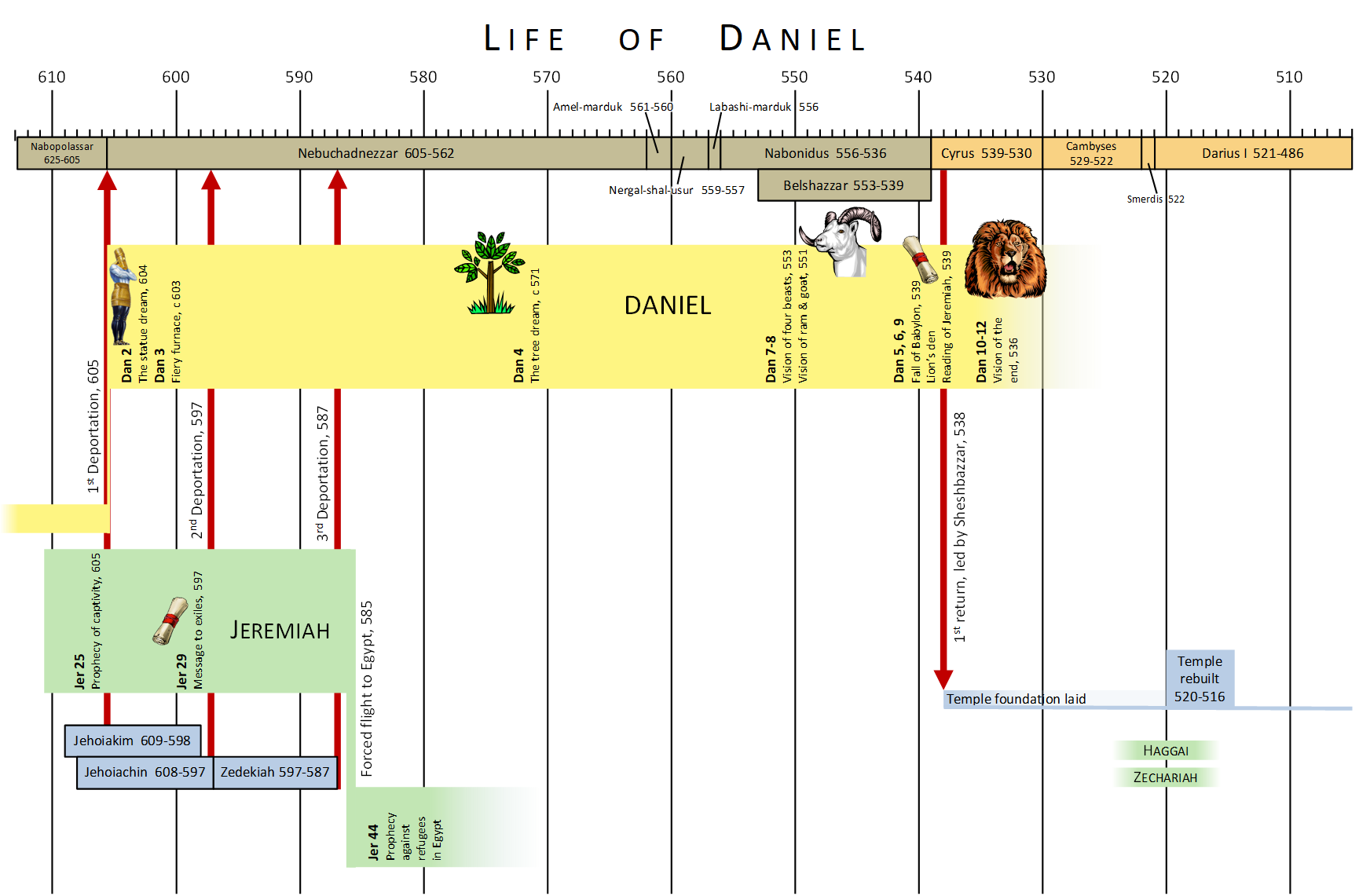Life and Times of Daniel

As we start out a new Sunday School series on the book of Daniel it may be helpful to see Daniel in the midst of the events that were going on in his day. Daniel was born when the ruthless Assyrian empire still ruled the north. Egypt was still an independent nation to the south, and would remain independent until conquered by the Persian king Cambyses in 525 BC.
We don’t know when Daniel was born, but perhaps it was around 620 BC. We do know that he was deported as a youth in 605 BC. Here are a few of the events that Daniel would have lived through as a boy, before being taken as a captive to Babylon.
- 612 BC – The Babylonians defeated the Assyrians at Nineveh, the Assyrian capital, pushing them off to the west (closer to Israel). The Assyrians had previously destroyed the nation of Israel just to the north of Judah and had threatened Judah, so this was probably news that was welcome in Judah.
- 609 BC – Judah’s king Josiah attempted to stop the Egyptian army from passing through their territory on their way to aid the failing Assyrian army as it battled the newly ascendant Babylonians. Josiah paid for that mistake with his life at the battle of Megiddo (2 Chron 35:19-24). This was likely a traumatic event for Daniel.
- 605 BC – The Babylonian king Nabopolassar died; his son Nebuchadnezzar took the throne, delivered the death blow to the Assyrians at the Battle of Carchemish, and invaded Judah, forcing it to acknowledge Babylonian hegemony. It was at this time, “during the third year of Jehoiakim, king of Judah,” that Daniel himself was taken captive to Babylon. From all we can tell he never saw his homeland again.
Daniel outlived the Babylonian empire. The last recorded date in the book of Daniel is the third year of the Persian king Cyrus, 536 BC (Dan 10:1). This means that Daniel lived at least 70 years in exile in Babylon.
Some of the events in Daniel’s life can be dated, while others cannot. The chart below shows approximately where the various chapters of Daniel can be placed chronologically. The vision of the tree and the humiliation of Nebuchadnezzar (chpt 4) are not given a date, but probably took place in the last half of Nebuchadnezzar’s reign. Most of Daniel’s visions occurred at the end of his life.
If you would like a printable version of this chart, along with a list of the later kings of Israel and a list of the contemporary rulers of Mesopotamia (including Nebuchadnezzar, Belshazzar, and Cyrus), you can find it here.



